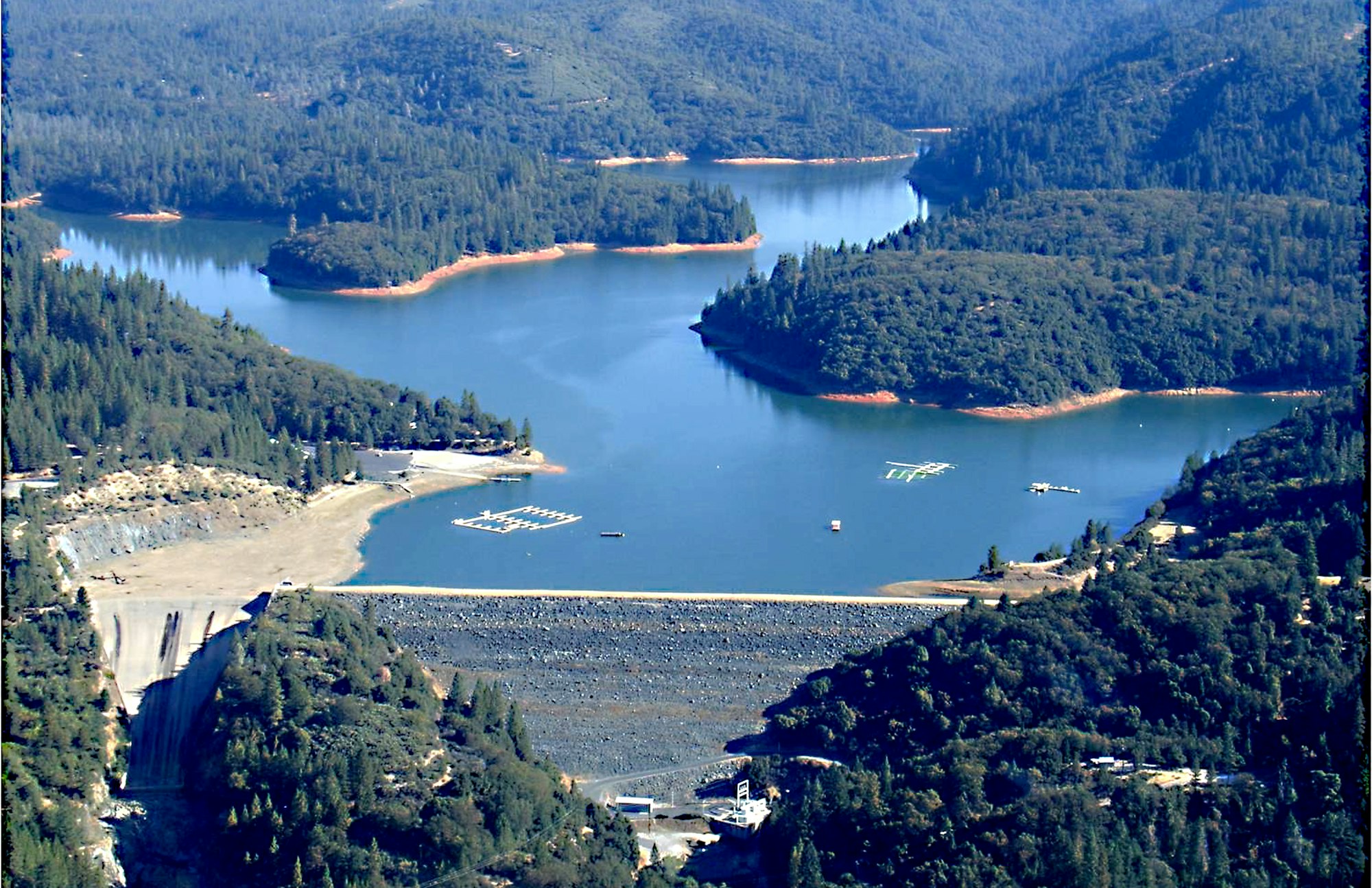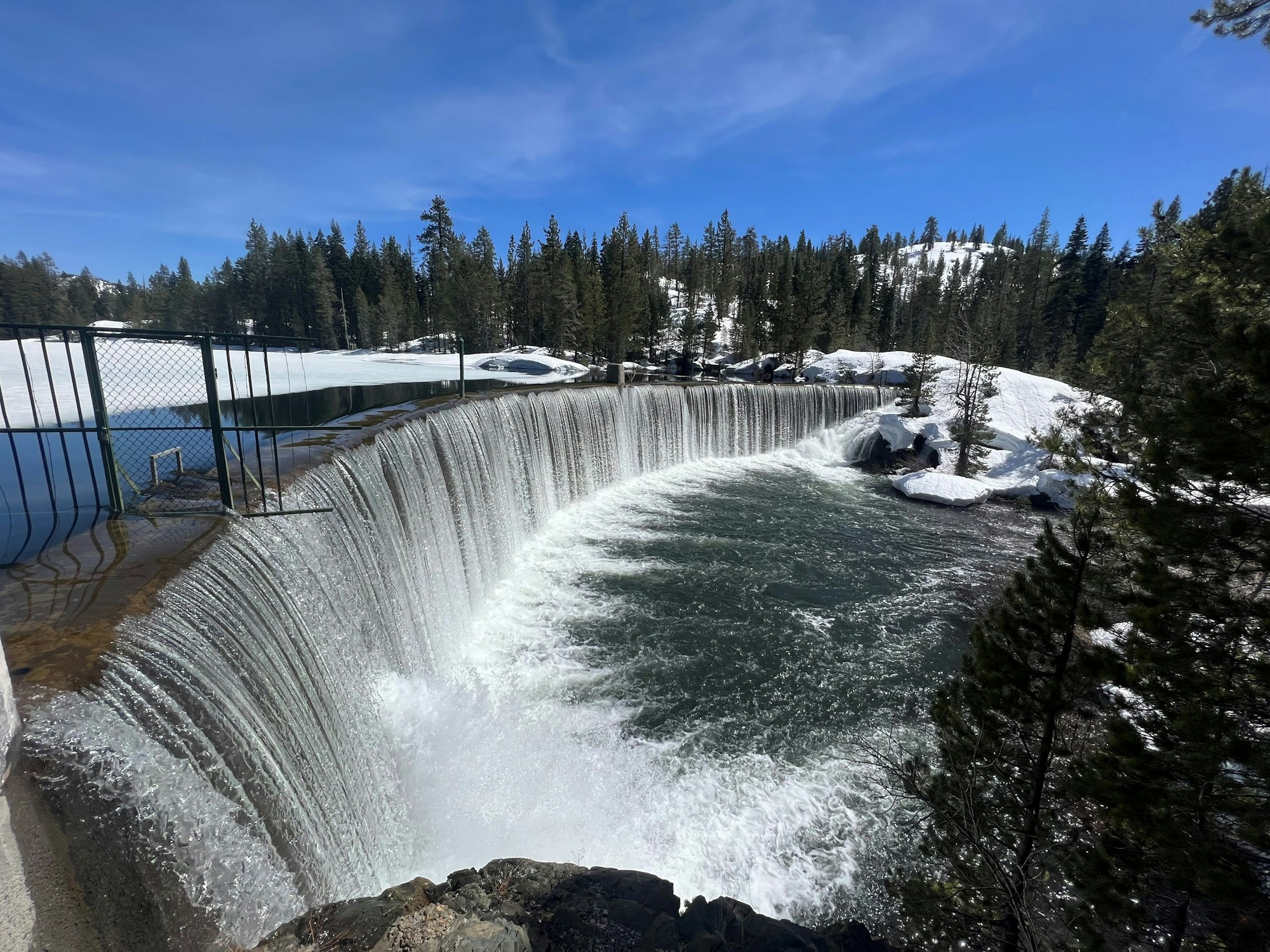NID Dams

Dams slow and control water; and NID makes sure the right amount of water is at the right place at the right time.
River water rises behind dams, forming artificial lakes called reservoirs. The stored water can be used to generate electricity or to supply water for irrigation and for use in homes and businesses.
Through the early 1900s, many of the old reservoir and canal systems built during the California Gold Rush had become under-utilized and were falling into disrepair. When NID formed in 1921, it began purchasing the Gold Rush infrastructure, make improvements, and recreate it as the backbone of a new public water system.
NID’s most ambitious project was the Yuba-Bear Hydroelectric Project, which was originally granted a 50-year license by the federal government in 1963 and completed in 1966. This project remains a very important milestone in NID history. It brought not only power generation capability, but new reservoirs and canal systems and, most importantly, it created an additional 145,000 acre-feet of water storage for district residents. In total, the Yuba-Bear Project built nine on-stream reservoirs, three off-stream impoundments and five diversion dams.

Today, NID owns and operates 15 dams. The most prominent dams are used for water storage in the reservoirs behind them –Jackson Meadows, Bowman, Scotts Flat, Rollins, for example. The reservoirs collect snowmelt during the winter months, and then water is released slowly over months to be used for irrigation, recreation, and hydropower generation, as well as treated for households.
The District has smaller diversion dams, which divert water from one watercourse into another.
The purpose of these dams is not to store water but to slow and redirect water into a canal or designated location. Examples of diversion dams are Deer Creek and Milton. Texas Creek, Clear Creek, Trap Creek, Rucker Creek and Fall Creek.
NID also operates dammed forebays and afterbays, which regulate flows around hydroelectric powerplants. Water is taken from the forebay, located upstream from the powerplant, to run the turbines. The water is then deposited in an afterbay, located downstream. Examples are at Dutch Flat No. 2 and Chicago Park.
Click on each dam to learn more about its history and function with descriptions and photos.
- Jackson Meadows Dam (elevation 6,036 feet)
- Milton Dam (elevation 5,690 feet)
- French Dam (elevation 6,660 feet)
- Faucherie Dam (elevation 6,123 feet)
- Sawmill Dam (elevation 5,860 feet)
- Jackson Dam (elevation 6,592 feet)
- Bowman North Dam (elevation 5,567 feet) and South Arch Dam (elevation 5,563.6 feet)
- Texas Creek Diversion Dam (elevation 5,386.75 feet)
- Clear Creek Diversion Dam (elevation 5,375 feet)
- Fall Creek Diversion Dam
- Trap Creek Diversion (elevation 5,360 feet)
- Rucker Creek Diversion Dam
- Scotts Flat Dam (elevation 3,075 feet)
- Dutch Flat Forebay (elevation 3,336 feet)
- Dutch Flat Afterbay (elevation 2,471 feet)
- Chicago Park Conduit
- Chicago Park Forebay (elevation 2,717 feet)
- Rollins Dam (elevation 2,187 feet)
- Van Giesen Dam and Combie Reservoir

